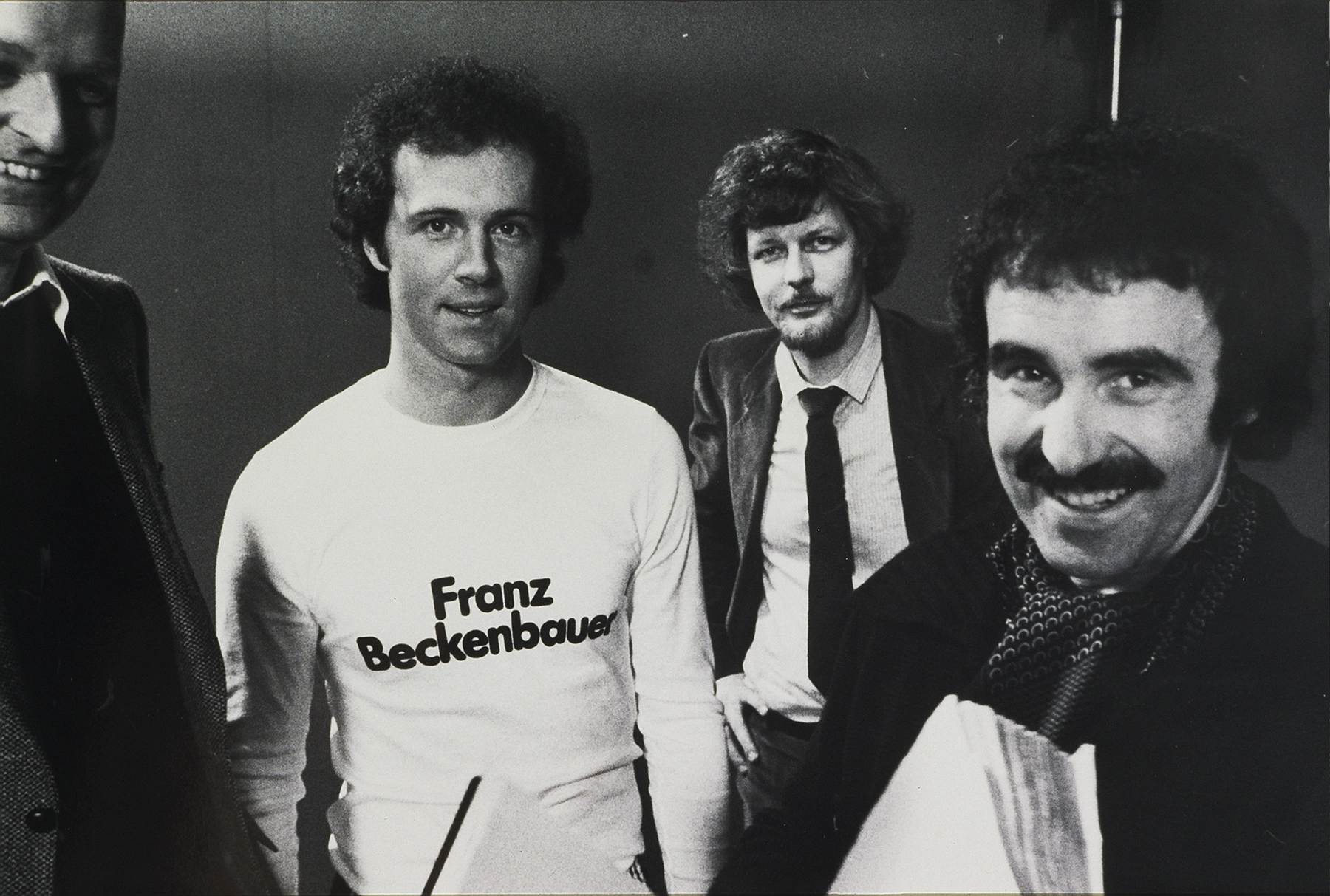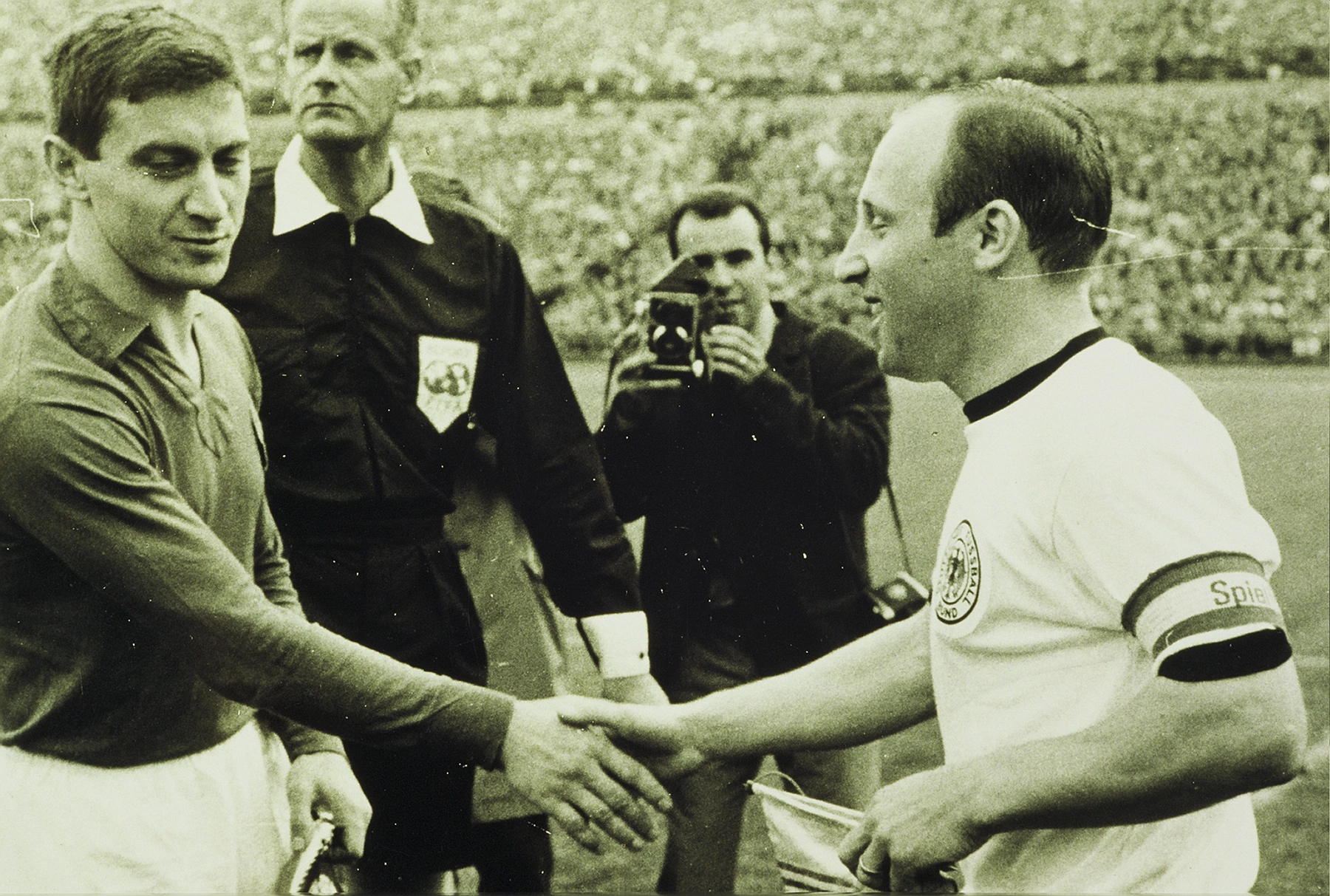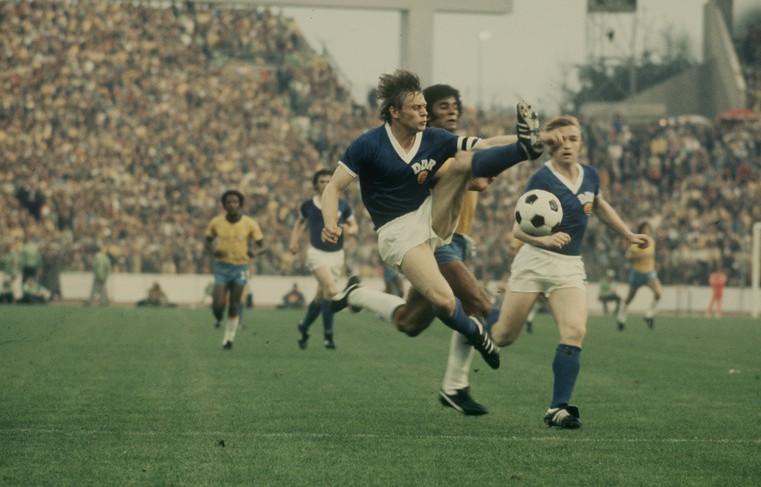Joachim Giesel, Uli Hoeneß at the match against Hannover 96 in the Eilenriedestadion, 1976.

Unknown, Joachim Giesel and Franz Beckenbauer during publicity shots, 1960s.
Unknown, Joachim Giesel and Franz Beckenbauer during publicity shots, 1960s.







Joachim Giesel, Uli Hoeneß at the match against Hannover 96 in the Eilenriedestadion, 1976.

Joachim Giesel, Bernd Bransch at the match between the GDR and Brazil at the Niedersachsenstadion in Hanover, 26.06.1974.
Soccer has always played a major role in the Giesel family. Twice, the game of football set the tone for Joachim Giesel’s career as a photographer. The youth magazine Rasselbande paid him his first fee for his photographs of the international match between the Federal Republic of Germany and the Soviet Union in Hanover on September 15, 1956. Giesel was just sixteen years old at the time and photographed the historically significant event with his first camera – a Voigtländer Bessa. His path to his first permanent job as a press photographer was paved after the final whistle of a match for SV Arminina Hannover, for whom Giesel had been playing since the age of eleven. During a player interview, he was encouraged by sports reporter Hans Rohberg to apply for a job at the Hannoversche Presse (HP) after completing his apprenticeship as a photographer. Over the course of his career, the aspiring photographer is always on the sidelines with his camera, whether on assignment for the Hannoversche Presse, the Bergmann-Verlag in Unna or for kicker.
He photographs soccer greats such as Uwe Seeler and Uli Hoeneß and witnesses historic matches. For Bergmann-Verlag, he photographs players before and during various Bundesliga and international matches. The portraits are printed on small-format trading cards measuring 9 × 6 centimeters and sold for a few pennies at kiosks. Children and adults could collect them in albums, stick them on, swap them and have them signed by footballers. These albums are the forerunner of the Panini collector’s picture albums that are still available today. On the occasion of the 1970 FIFA World Cup in Mexico, Giesel produced player portraits of the German national team led by Franz Beckenbauer and Gerd Müller. Four years later, he documented the historic World Cup in West Germany, where the national teams of the FRG and GDR met for the first and only time.
From the 1970s, footballers are no longer just in demand on the pitch, but also earn lucrative additional income as brand ambassadors for numerous products of the West German ‘economic miracle’. The popularity of soccer and individual players increased with the establishment of the Bundesliga and the coverage on television with the Sportschau and in the press with the soccer magazine kicker. With the commercialization of sport, new branches of business and advertising emerged, in which Giesel was happy to make a good profit. The most important footballers of the time pose in front of his lens: Gerd Müller in 1969 for a Telefunken color television and “Kaiser” Franz, who poses for the stationery manufacturer Pelikan in 1978.
Then as now, soccer is more than just a sport, but a mass phenomenon that creates national identity and moves millions of people. As an enthusiastic soccer fan, Giesel photographs the many facets of the sport, whether as a photojournalist on the sidelines or as an advertising photographer on set.
2024 Leipzig, Mädler Art Forum: Menschenbilder | Zeitgeschichte. Der Fotograf Joachim Giesel.